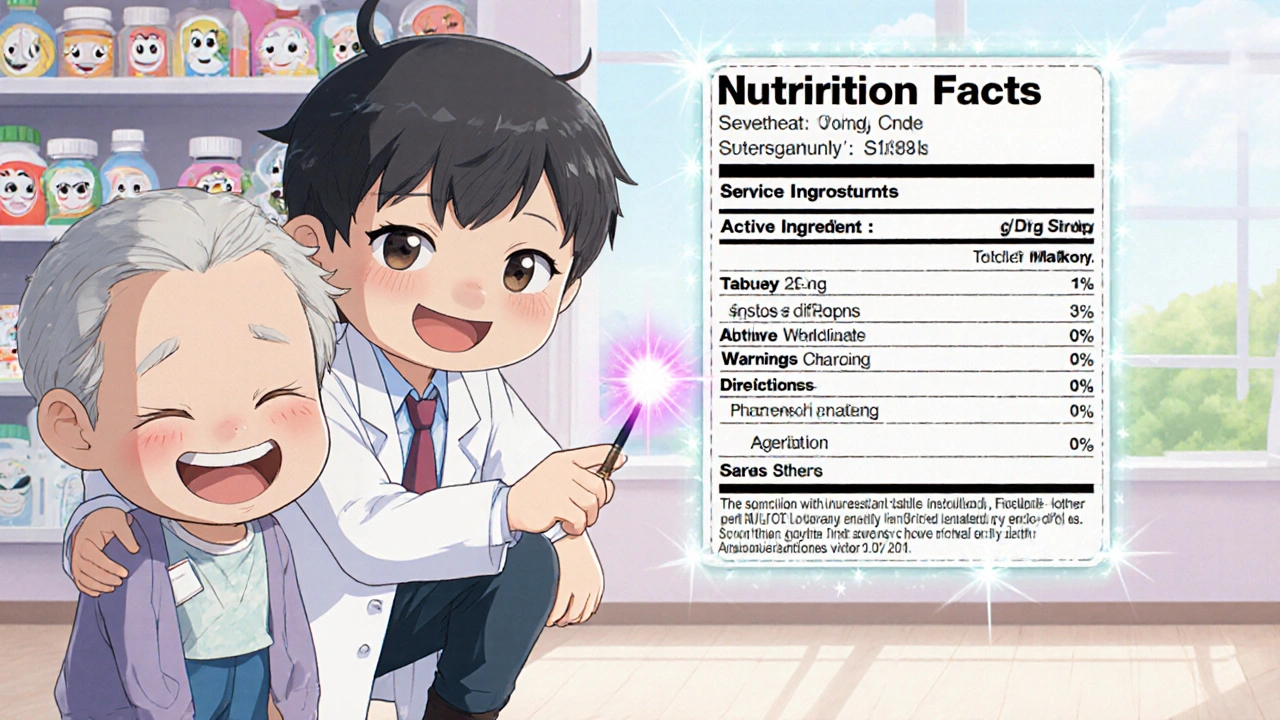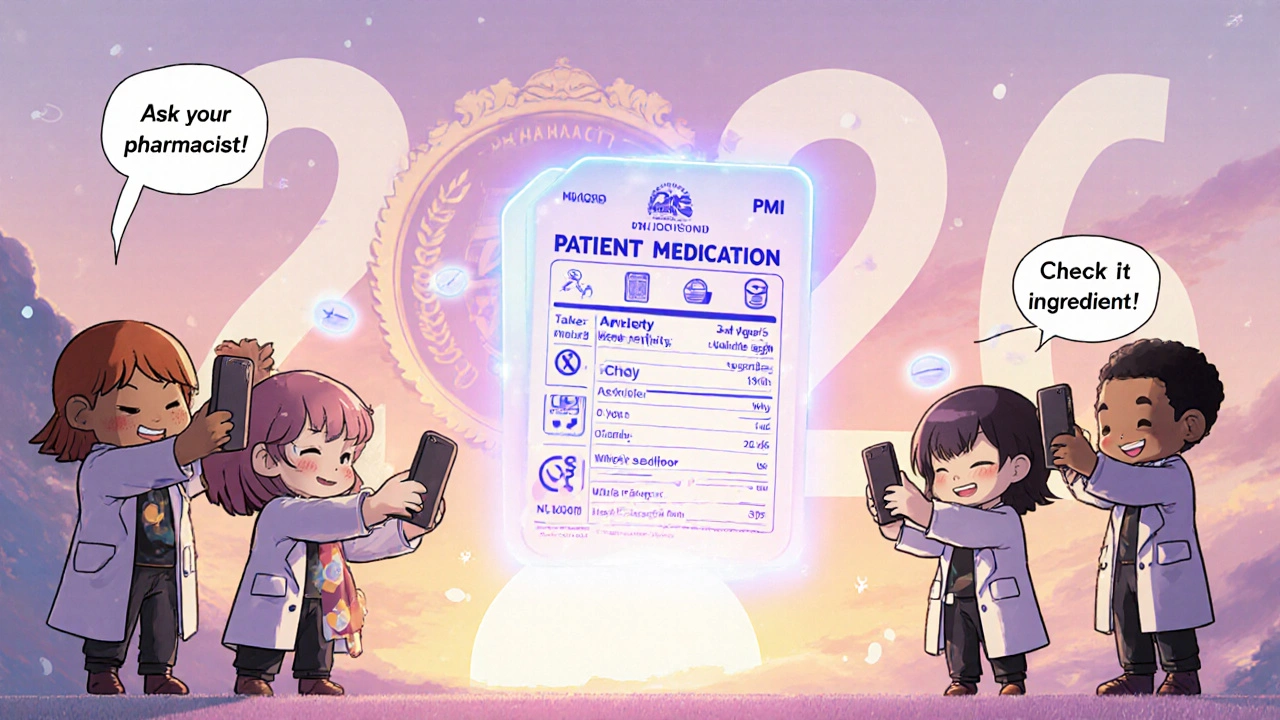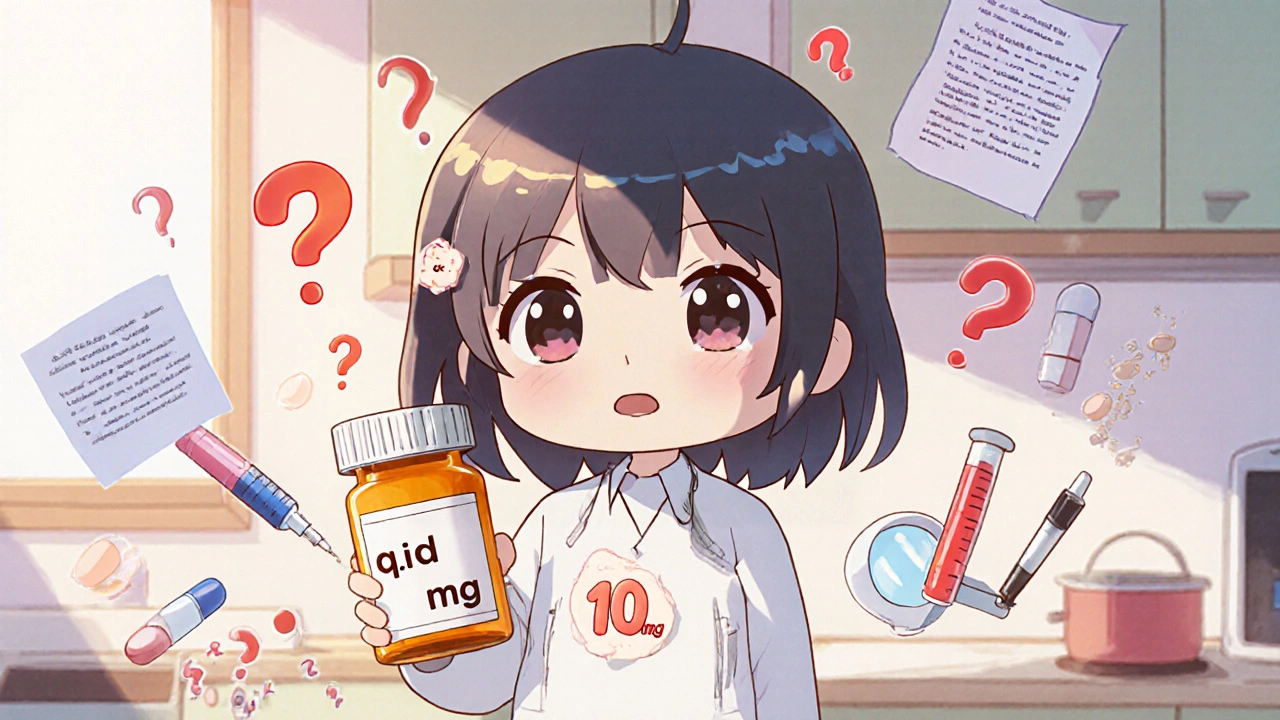Every time you pick up a prescription or grab a bottle of ibuprofen from the shelf, you’re holding a document that could save your life-or hurt you if you don’t know how to read it. Drug labels aren’t just stickers on bottles. They’re legal, medical, and safety documents designed to tell you exactly what’s inside, how to use it, and what could go wrong. But for most people, they’re confusing, cramped, and full of jargon. If you’ve ever stared at a prescription label wondering what ‘q.i.d.’ means or if that tiny print says ‘take with food’ or ‘take on empty stomach,’ you’re not alone. In fact, nearly 7 out of 10 patients struggle to understand their labels, and many take their meds wrong because of it.
What’s Actually on a Prescription Label?
Prescription labels in the U.S. follow strict rules set by the FDA. The full prescribing information, called the USPI (United States Prescribing Information), is written for doctors and pharmacists, not patients. But the label you get at the pharmacy is a simplified version pulled from that document. Here’s what you’ll actually see on your bottle or box:
- Patient name - Double-check this. Giving someone else your meds because the name looks similar? That’s how errors start.
- Drug name - You’ll see both the brand name (like Abstral) and the generic name (fentanyl). Always know both. Generic names are the same across all brands; brand names change with manufacturers.
- Strength and dosage form - This tells you how much medicine is in each pill, tablet, or liquid. Example: ‘100 micrograms per tablet.’ Don’t assume ‘10 mg’ means the same as ‘10 mcg.’ One is 100 times stronger.
- Directions - ‘Take one tablet by mouth every 6 hours as needed for pain.’ Watch for abbreviations like ‘q.d.’ (once daily), ‘b.i.d.’ (twice daily), or ‘t.i.d.’ (three times daily). Many people misread these.
- Prescriber name - Who ordered it? Keep this handy if you have questions.
- Pharmacy name and phone - Call them if anything’s unclear. Pharmacists are trained to explain labels.
- Dispense date - Helps you track how long you’ve had the medicine.
- Expiration date - After this date, the drug may not work as well-or could break down into harmful substances.
- NDC number - The National Drug Code is a unique 10-digit identifier. It’s used by pharmacies and insurers to track the exact product.
- Refills - How many times you can get it refilled without a new prescription.
That’s the basics. But here’s what’s missing from most labels: why you’re taking it. The reason for the prescription-like ‘for high blood pressure’ or ‘for anxiety’-isn’t required by the FDA on the pharmacy label. But studies show that when patients know why they’re taking a drug, they’re 42% less likely to make mistakes. Some pharmacies now add this voluntarily. Ask for it.
Over-the-Counter Labels: The Drug Facts Box
If you’re buying something without a prescription, you’re looking at a Drug Facts label. It’s simpler, clearer, and designed for you to read. The FDA made these labels standard in 1999. Every OTC product must follow this format:
- Active ingredient - The medicine that works. Example: ‘acetaminophen 500 mg.’ This is the most important part. Many cold medicines have the same active ingredient, so taking more than one can lead to overdose.
- Purpose - What the ingredient does. Example: ‘pain reliever/fever reducer.’
- Uses - What symptoms it treats. Example: ‘relieves headaches, minor aches, fever.’
- Warnings - When NOT to use it. Includes allergies, interactions with other drugs, pregnancy risks, and conditions like liver disease.
- Directions - How much to take, how often, and for how long. Never exceed the max daily dose.
- Inactive ingredients - Fillers, dyes, flavors. Important if you have allergies (like gluten or red dye #40).
- Other information - Storage tips, like ‘keep at room temperature’ or ‘protect from moisture.’
Here’s a real-world example: If you’re taking Tylenol for a headache and also take a cold medicine that contains acetaminophen, you could accidentally take 1,500 mg in one day when the safe limit is 3,000 mg. But if you check the active ingredient on both labels, you’ll catch the overlap. That’s why reading the Drug Facts box isn’t optional-it’s lifesaving.
Why Prescription Labels Are So Hard to Read
Why do we still get tiny print and confusing abbreviations? The answer is simple: the system was built for doctors, not patients.
The FDA’s labeling rules prioritize clinical detail over clarity. The full prescribing information is over 50 pages long for many drugs. The pharmacy label is just a summary. But even that summary doesn’t follow patient-friendly standards. Abbreviations like ‘q.d.’ or ‘p.o.’ (by mouth) are still common. The Institute for Safe Medication Practices says these kinds of abbreviations cause about 15% of all medication errors.
Older adults are hit hardest. A 2022 Medicare report found that 54% of seniors struggle with small print. That’s not just about eyesight-it’s about cognitive load. When you’re juggling five medications, each with different schedules, and the label says ‘take one every 8 hours,’ but you’re not sure if that means 8 a.m., 4 p.m., and midnight, you might skip a dose or double up.
And then there’s the name confusion. Hydroxyzine (for anxiety) vs. hydralazine (for high blood pressure). Prednisone vs. prednisolone. They sound alike. They look alike. But they do very different things. The FDA recommends something called ‘tall man lettering’-writing them as PREDNIsone and PREDNIsolone-to help avoid mix-ups. But not all pharmacies use it.

What You Can Do Right Now
You don’t have to wait for the system to change. Here’s how to protect yourself today:
- Ask your pharmacist to explain the label - Seriously. They’re paid to do this. Say: ‘Can you walk me through what this is for and how to take it?’ Studies show this cuts errors by 29%.
- Use a pill organizer - If you take multiple meds, a weekly tray with time slots helps avoid confusion.
- Take a photo of the label - Store it on your phone. When you’re away from home and need to check the dose, you’ve got it.
- Keep a medication list - Write down every drug, dose, and reason. Bring it to every doctor visit. Many hospitals now ask for this on intake.
- Check for Medication Guides - For high-risk drugs (like blood thinners, opioids, or antidepressants), the pharmacy must give you a separate one-page guide. Don’t ignore it. It’s written in plain language.
Also, if your label has an expiration date from 2020, throw it out. Expired meds don’t just lose potency-they can become unsafe. And never share your meds, even if someone has the same symptom. What works for you might be dangerous for them.
The Future: Patient-Centered Labels Are Coming
The FDA knows the current system isn’t working for patients. In 2023, they announced a new plan called Patient Medication Information (PMI). It’s a one-page, standardized format that will include:
- Why you’re taking the drug
- How to take it (in plain language)
- What to expect (side effects)
- When to call your doctor
- What to avoid (food, alcohol, other drugs)
Think of it like a nutrition label for medicine. The first PMI templates are expected in 2026. But until then, you have power. Don’t be afraid to ask questions. Don’t guess. If a label doesn’t make sense, call your pharmacist. Or ask your doctor to write the reason for the prescription on the slip they give you.
Medication errors cause about 7,000 deaths in the U.S. every year. Most of them are preventable. Understanding your label isn’t just helpful-it’s a basic safety skill, like knowing how to use a seatbelt.

Common Questions About Drug Labels
What does ‘PRN’ mean on a prescription label?
‘PRN’ stands for the Latin term ‘pro re nata,’ which means ‘as needed.’ It’s not a fixed schedule. For example, ‘take one tablet PRN for pain’ means take it only when you feel pain-not every 4 hours unless you’re in pain. Don’t take it just because it’s been 4 hours since your last dose.
Can I take my medication with alcohol?
Never assume it’s safe. Many medications-especially antibiotics, painkillers, and antidepressants-can have dangerous interactions with alcohol. The label should warn you if this is a risk. If it doesn’t, ask your pharmacist. Even if you’ve taken it with alcohol before, your body changes over time, and so can the drug’s effect.
Why does my pill look different this time?
It’s probably the same drug, just made by a different manufacturer. Generic drugs must have the same active ingredient, strength, and effect as the brand name-but they can look different in color, shape, or size. Check the name and strength on the label. If it matches, it’s safe. If you’re unsure, call your pharmacy.
What should I do if I miss a dose?
Check the label or ask your pharmacist. For most meds, if you remember within a few hours of the missed dose, take it right away. If it’s almost time for the next dose, skip the missed one. Never double up unless told to. Some drugs, like blood thinners or birth control, have very specific rules. Don’t guess.
Are generic drugs as safe as brand-name drugs?
Yes. The FDA requires generics to have the same active ingredient, strength, dosage form, and route of administration as the brand-name version. They must also work the same way in your body. The only differences are inactive ingredients (like fillers) and packaging. Generics are tested to be just as effective and safe.
What to Do If You’re Still Confused
If you’re still unsure after reading the label, talking to your pharmacist, or checking online resources, here’s your next step: write down your question and bring it to your next doctor’s visit. Don’t wait until something goes wrong. Medication safety isn’t about being perfect-it’s about being aware. And awareness starts with reading the label, asking questions, and never assuming you know what’s written.
